Valencia ended the first half of last season’s La Liga with a series of unfortunate draws. However, thanks to the leadership and remarkable form of captain Dani Parejo, the players picked themselves up and got into the habit of winning. They ended up finishing fourth in La Liga and defeating Barcelona in the Copa del Rey final, thus winning their first trophy for 11 years – with their long-serving skipper in tears of joy.
However this season, their talented manager Marcelino was absurdly fired after just three matches, and it’s possible that the team will have to adapt to a new style of play. No matter what, Parejo will remain the talisman. In this scout report, we will use tactical analysis to demonstrate Parejo’s key attributes, and how he will adapt to the new coach’s system.
Overview
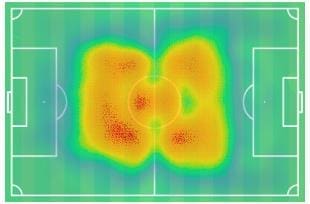
The above heatmap shows that Parejo often operates around the middle third. His most intense actions zones were the part of the middle third in his own half. His work rate is higher than average.
This description from Whoscored can give us a brief idea of his strengths and weaknesses.
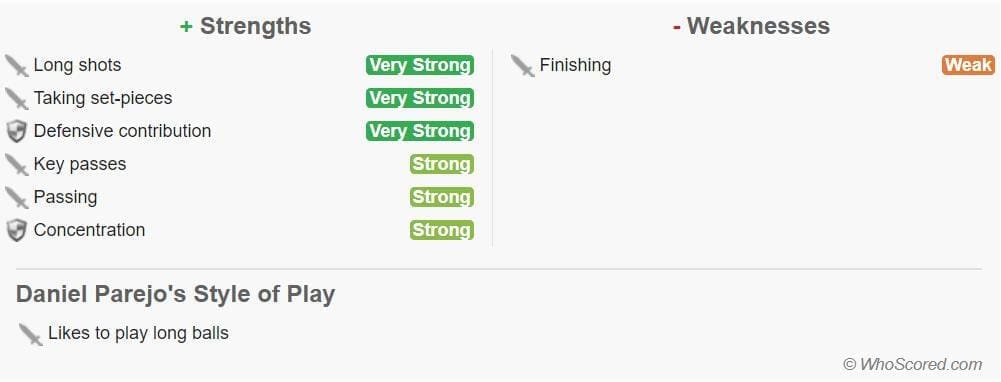
Parejo is a set-piece specialist. In La Liga last season, he scored 6 goals from set-pieces (5 penalties, 1 free-kick, 1 corner!!). He also registered 54 key passes (45 from corners, 9 from free-kicks) and 4 assists from these situations.
He is a quality passer. Last season, he averaged 60.11 passes per 90 with an impressive 87.9% accuracy. He provided 2.3 key passes/90 mins.
What role did Parejo play in Marcelino’s side?
Marcelino favours a narrow 4-4-2, with a compact zonal defence and quick transitions with pacey forwards. The aim is to protect the centre and force the opponents wide. When that happens, Valencia will overload the ball-side to suffocate the opponents and win the ball back.
The players have to be very energetic to stay compact together, cover passing lanes through the middle, and presses the opponent aggressively to either win the ball back or slow down ball progression. Valencia has a young squad suited to Marcelino’s intense approach.
All players have to participate in the pressing scheme. As they are very compact and narrow, the opponent’s ball carrier can easily be pressed from all sides. Here, we can see 10 Valencia players in such a small area. Busquets (the ball carrier) is surrounded by 5 Valencia players, and all nearby passing lanes for him are cut off.
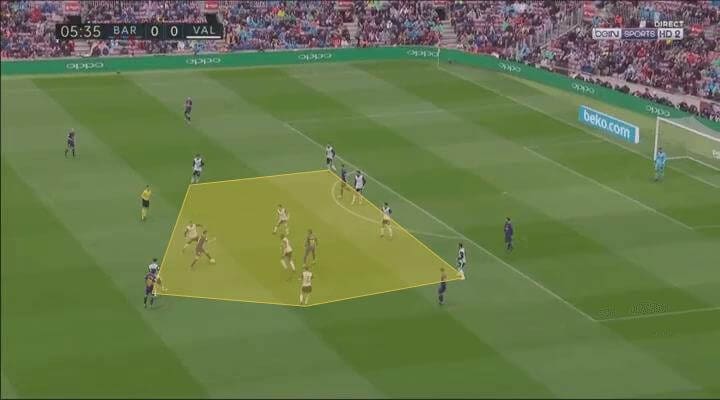
In Marcelino’s 4-4-2, the two central midfielders don’t have too many creative duties. Their main task is to protect the defence and stay close to them out of possession. One of them, usually Geoffrey Kondogbia, is mainly a ball winner: both of them are strong and can outmuscle opponents, but are also smart positionally to block penetrative passing lanes. Parejo is much more mobile and technically gifted: he is less impressive physically, but has great positioning, and can play the creative playmaker role. Protected by the other, more physical and conservative pivot, he can step out and press midfielders right before they receive the ball, thus preventing them from turning to scan the field.
Defensive contribution
Positioning & defensive skills
The vertical compactness between the midfield and the defence is crucial to Marcelino’s style. The two strikers are the main counter-attacking outlets and at times may not track back on time, but the midfield four must be very disciplined out of possession.
Parejo has great defensive awareness and skills. Last season, he registered 3.66 interceptions, 8.07 recoveries, and 0.73 successful sliding tackles (57.7% success rate) per 90.
He is conservative in making sliding tackles but is quite effective when doing so. In the example below, a Celtic player had got free, and the striker was dragging Diakhaby away from his path. Parejo recognised the situation and ran back to stop the ball carrier with a sliding tackle just outside the box.
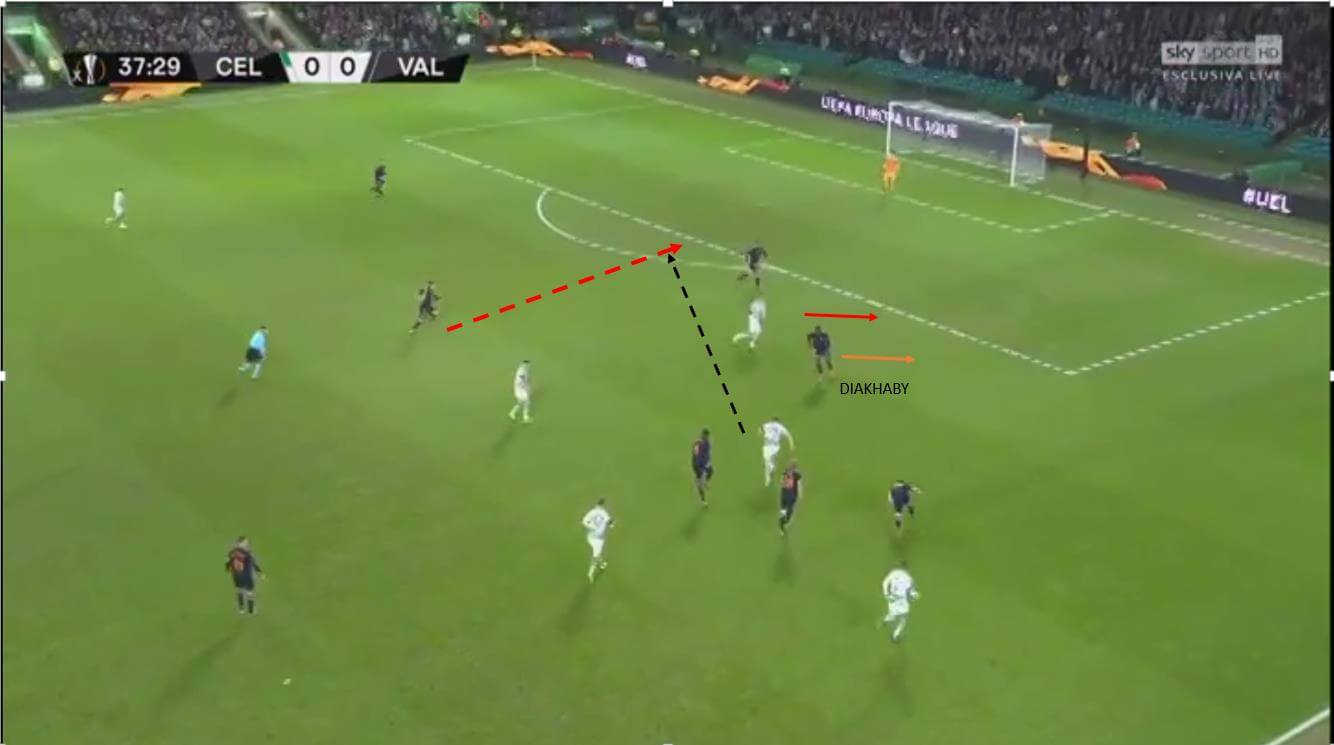
Pressing
Take a look at some definitions from Statsbomb:
Pressure Regains – Times a player’s team won the ball back within 5 seconds of the player pressuring an opponent, per 90 minutes.
Pressures – The number of times a player pressures an opposition player per 90.
Parejo is very aggressive and will look for chances to step out of the midfield to close down the ball-carrier.
In 2018/19 La Liga, Parejo averaged 20.87 pressures and 4.12 pressure regains per 90. He’s definitely an aggressive and effective pressing player (via Statsbomb).
When closing opponents, he positions himself to block his direct forward option, forcing him to pass sideways or backwards. Here, the Eibar player had just received the ball and had an open passing lane forward (dashed arrow). Parejo immediately moved to close the gaps (black arrow) and hurries the ball carrier, forcing him to turn his back to goal. Parejo (orange arrow) then followed him (red solid arrow) closely while spreading his legs whenever a passing lane opened. The Eibar midfielder couldn’t turn and had to pass backwards.

Parejo shows great teamwork when it comes to pressing coordination, at times giving the opponent no time and space to breathe.
In the example below, the ball carrier was being pressed by two players from behind. There was enough space in front to exploit, and he decided to burst towards it. However, Parejo quickly anticipated the problem and ran towards his path. At the beginning of the incident, the distances towards the collision point of the two players were roughly the same. While much slower than the opponent, Parejo was proactive and got to the collision point just in time.
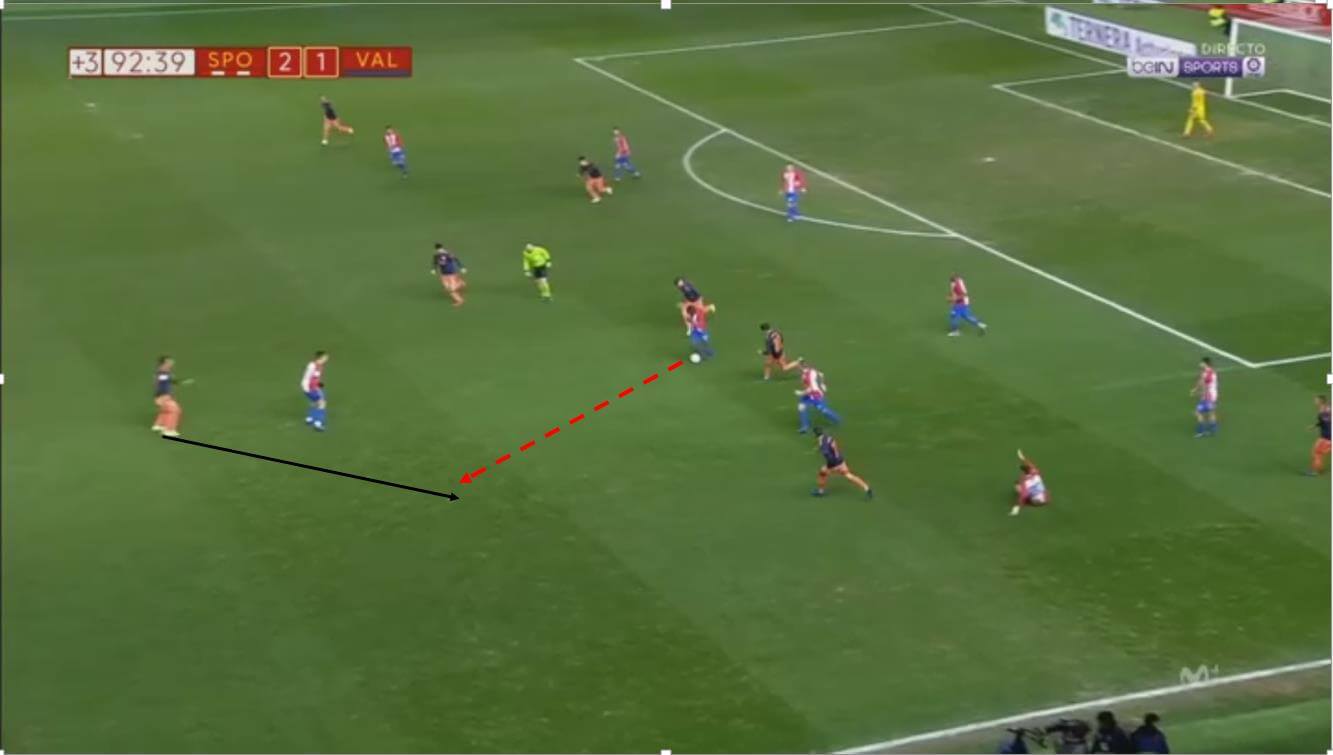
The pacey opponent had to change direction but was stopped by Parejo’s teammate.
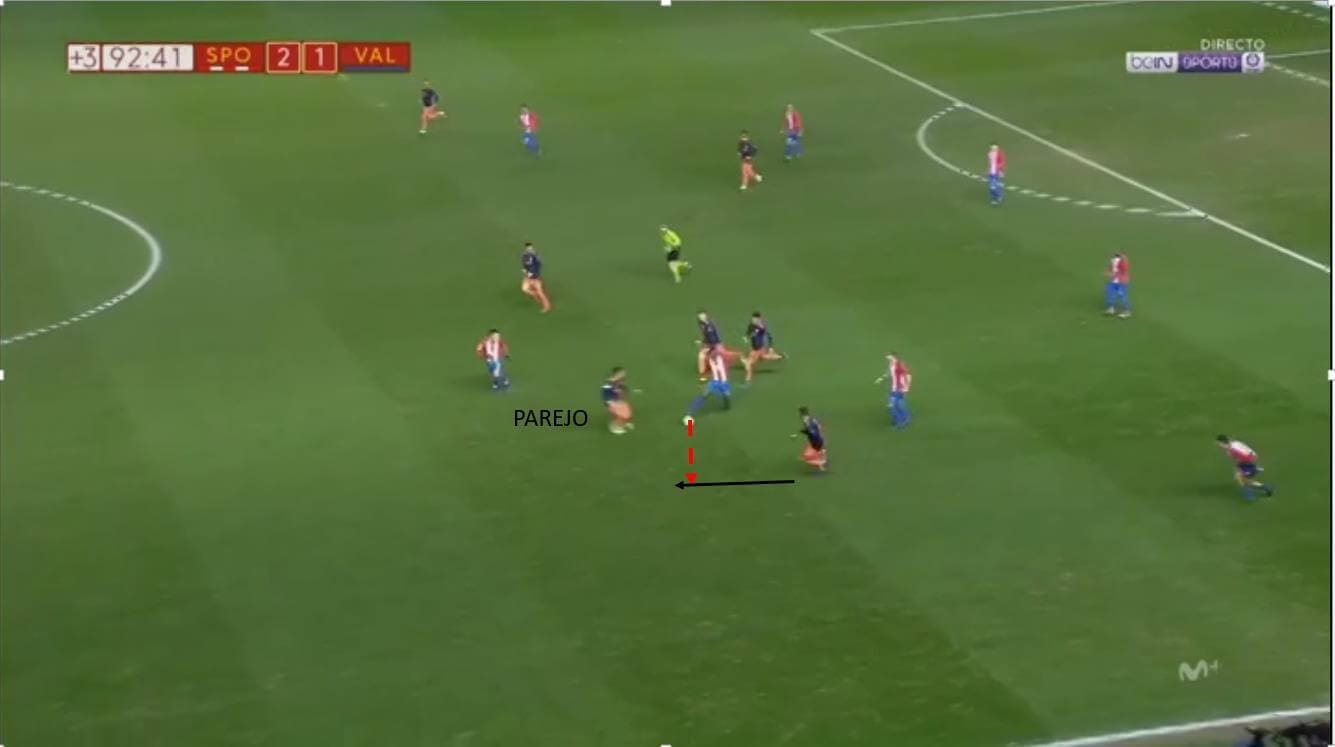
There are a few more examples of his great coordination when pressing below.
Offensive contribution
Counter-attacks
Counter-attacking is Valencia‘s main offensive weapon, typically by direct through balls to pacey strikers like Rodrigo Moreno and Kevin Gameiro. They are very mobile and can track back to coordinate getting the ball back, then rush forward into space. Parejo is a player capable of quick combinations and has great vision to quickly provide quality balls into the runs of the strikers.
Here, Celtic’s ball carrier was closed down from all sides. Parejo stepped out to challenge him, forcing a pass which Cheryshev intercepted.
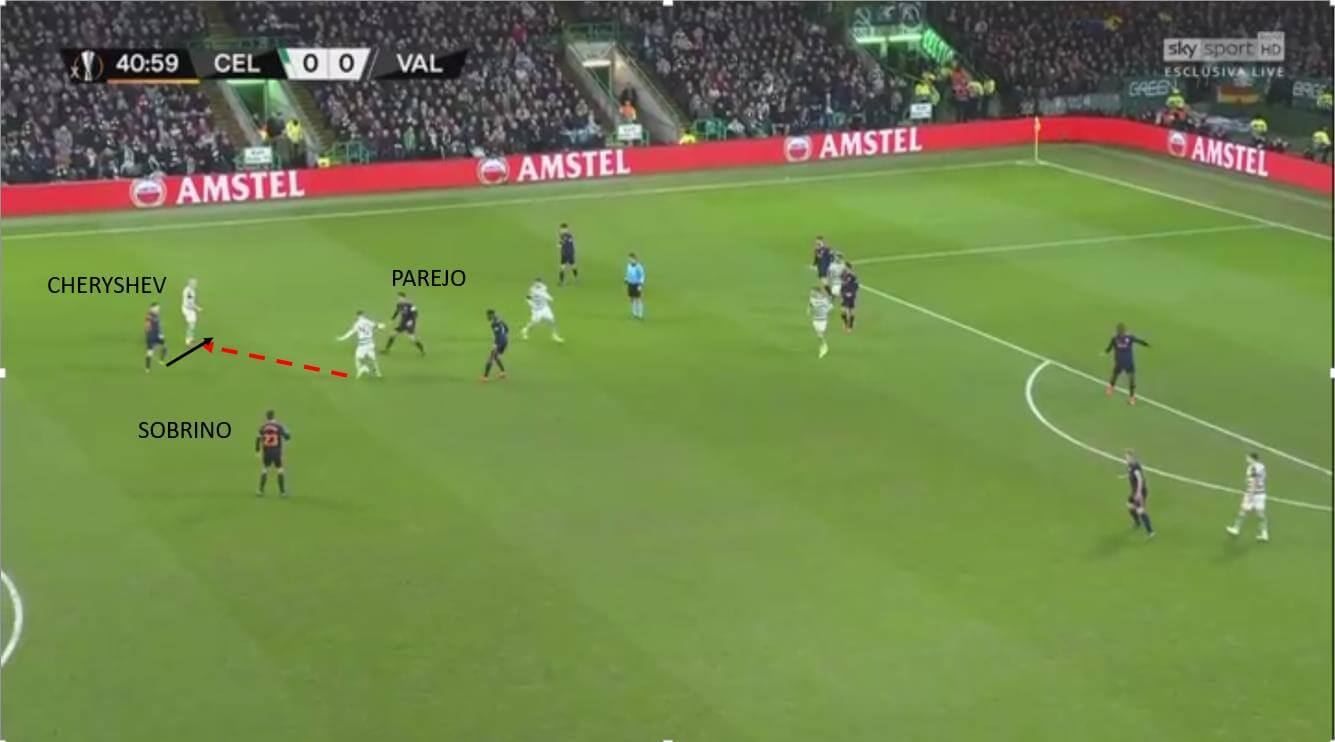
After some quick combinations, Parejo had enough time and space to provide a second assist to Sobrino, who was rushing forward.

In the below example, a Villarreal defender was being pressed by the two Valencia forwards. Parejo positioned himself to cover the most obvious passing lane (red arrow) to the Villarreal pivot. Under pressure, the ball carrier passed the ball to Parejo, and he instantly assisted Cheryshev (black arrow), who exploited the space behind the defender mentioned above.
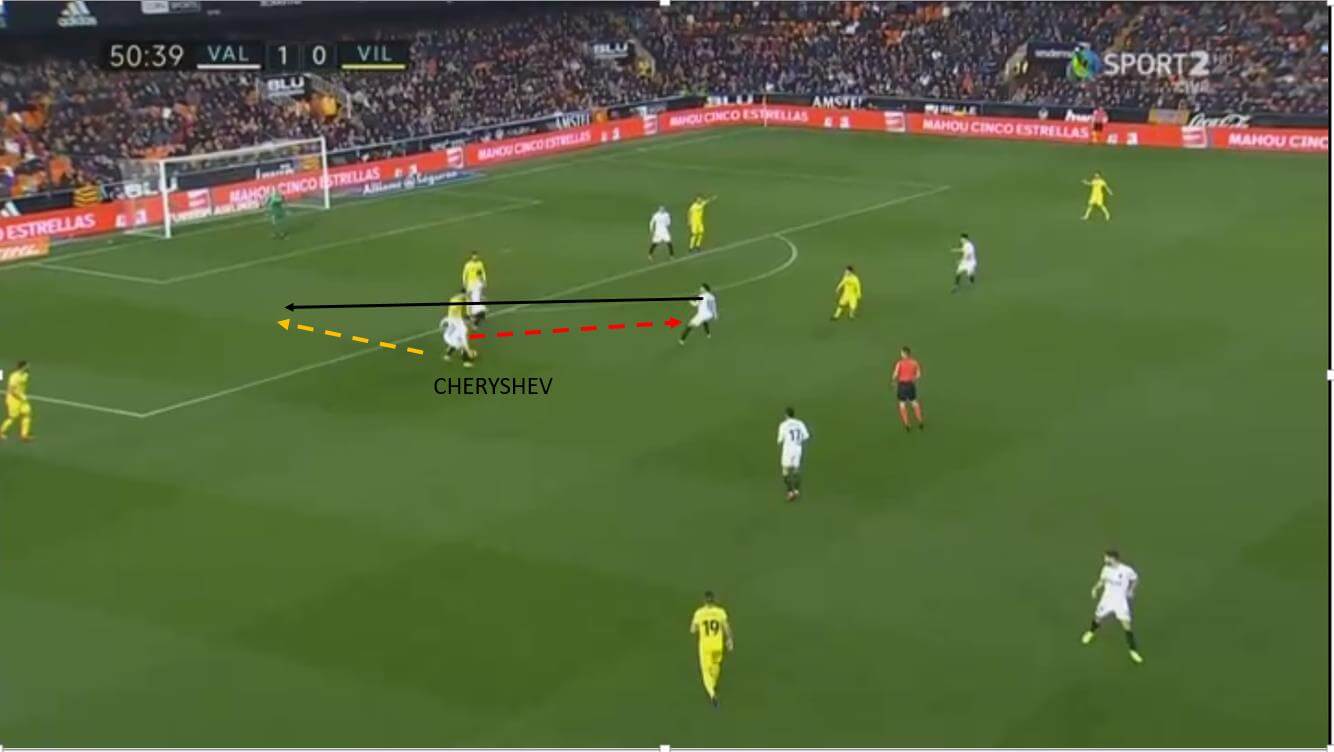
There are many solutions Parejo can provide to help Valencia develop the play:
Dribbles and feints
Parejo uses a lot of fake passes to distract the opponent, and possibly open a passing lane. He will then has enough time and space to dribble and pass. He is composed amid heavy pressing, has good close control and can use the 360 turn to shield the ball and trick the opponent.
Movements and combinations
Parejo’s is adept at exploiting pockets of space and making himself a good passing option to penetrate the opposition defence. A typical idea is to constantly position himself between four opposition players and use short combinations to progress the ball upfield. We can see that in the example below.
Here, Parejo was in the blue circle between four Villarreal players, providing a nearby option for Piccini and can link up easily with Rodrigo. After getting the ball from Piccini, he found Rodrigo and instantly moved into the higher pocket of space, circled in red.
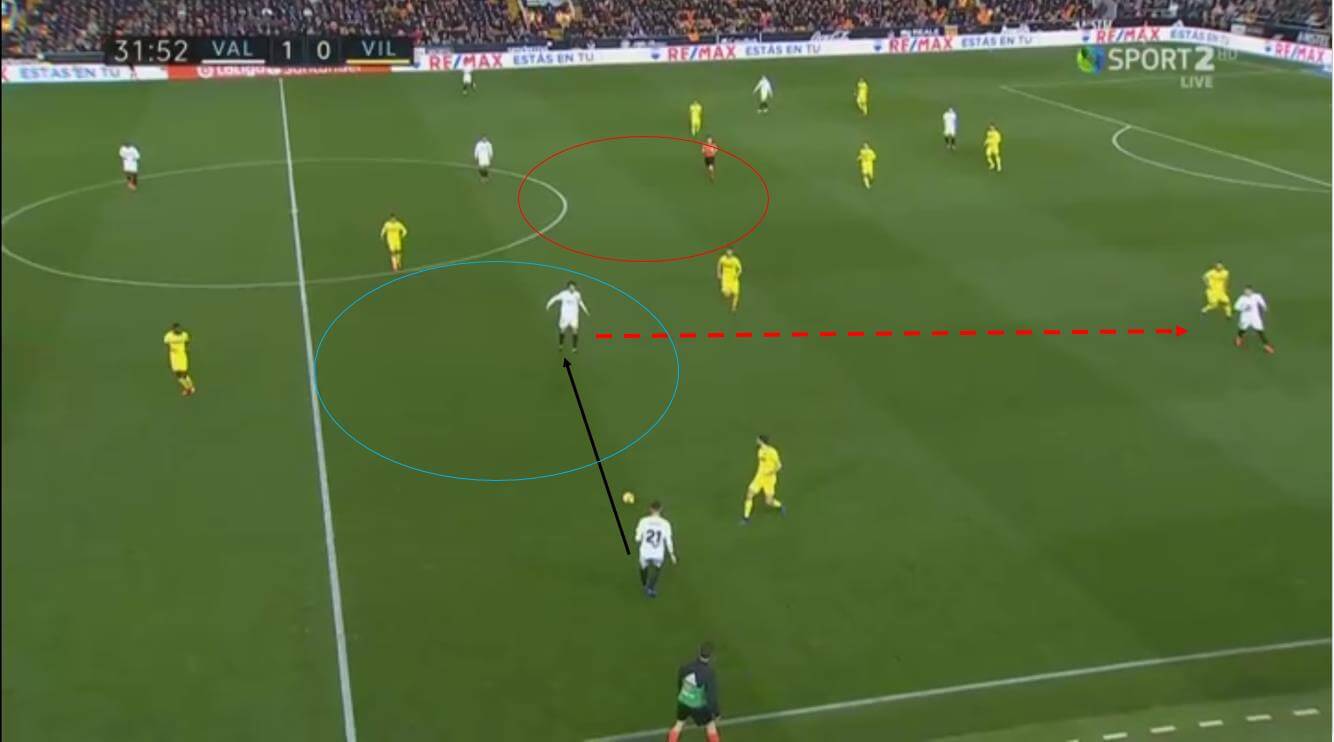
Rodrigo returned him the ball. The Valencia captain beat the midfielder (circled in orange) and moved into yet another pocket of space. By simple combinations and smart movements, he got the ball into zone 14, which is the zone located in the middle of the pitch immediately outside the penalty area appears crucial for goal scoring (Taylor et al., 2002).
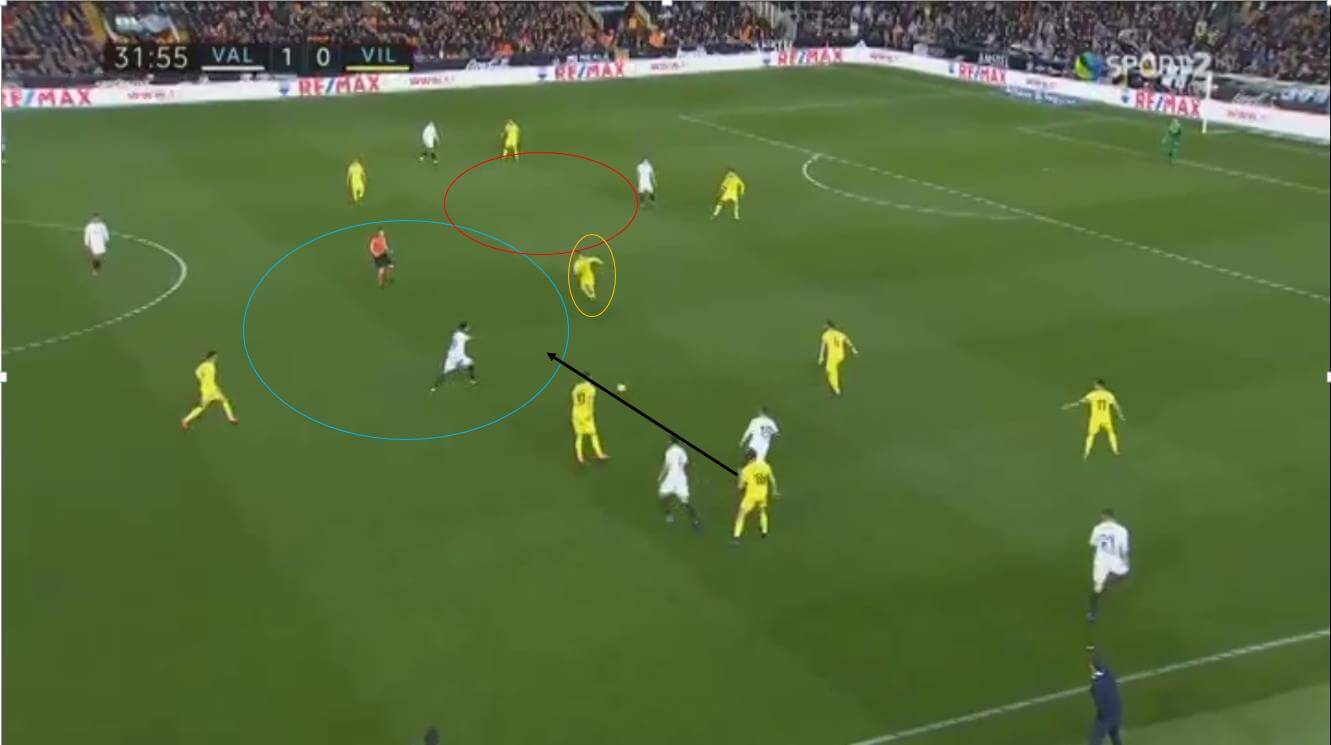
Let’s take a look at another example. Here, Parejo received the ball in space between four Huesca players. He then dribbled past the opponent circled in orange.
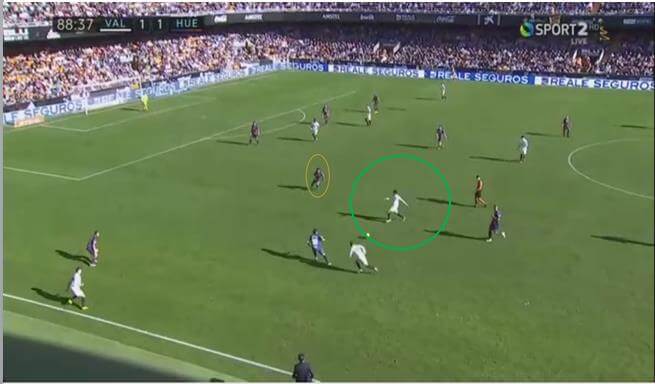
He then passed to the forward (black arrow) and rushed into the small area circled in red. This position gave him enough time and space to easily combine with three nearby teammates. He could also send a through ball to left-back Gaya, who was looking to sprint into space.
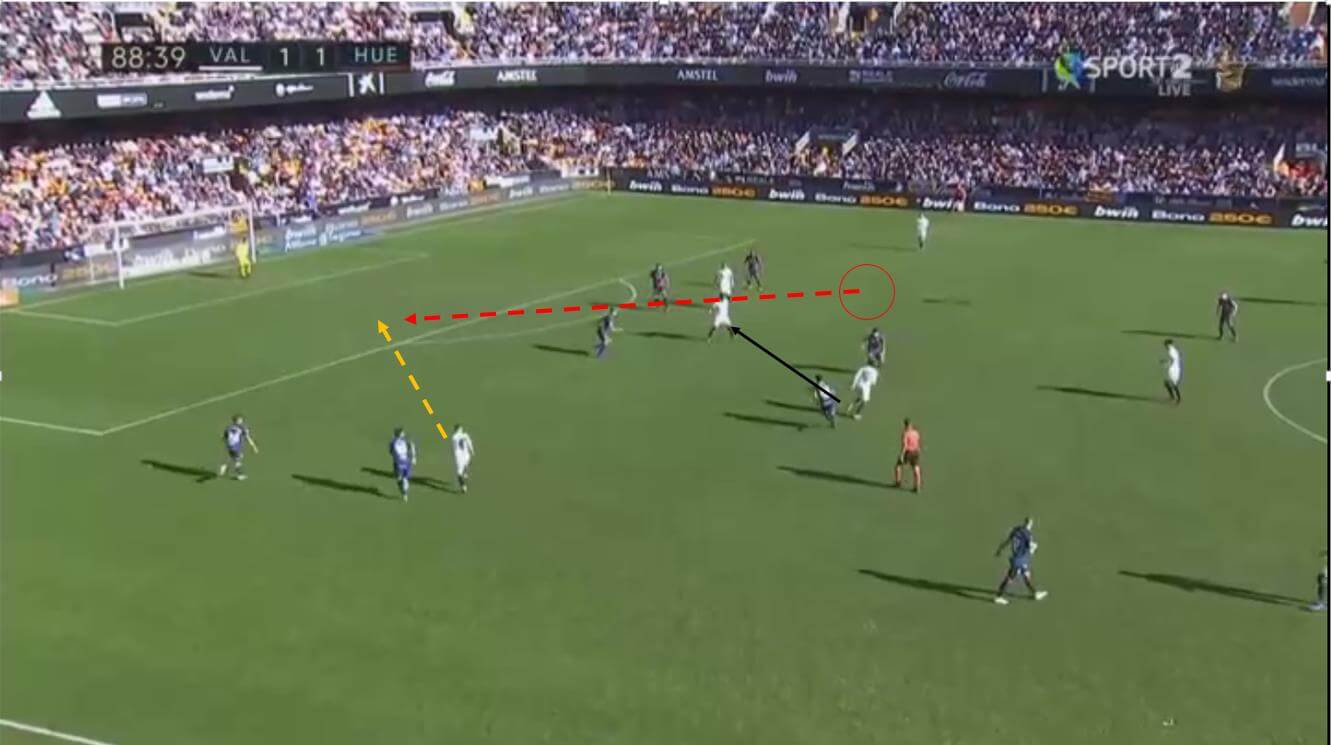
The attempted combination didn’t succeed. In the incident right after that, he moved to the red circle to open a passing lane for the ball carrier and get himself into a position with time and space to pick a pass.
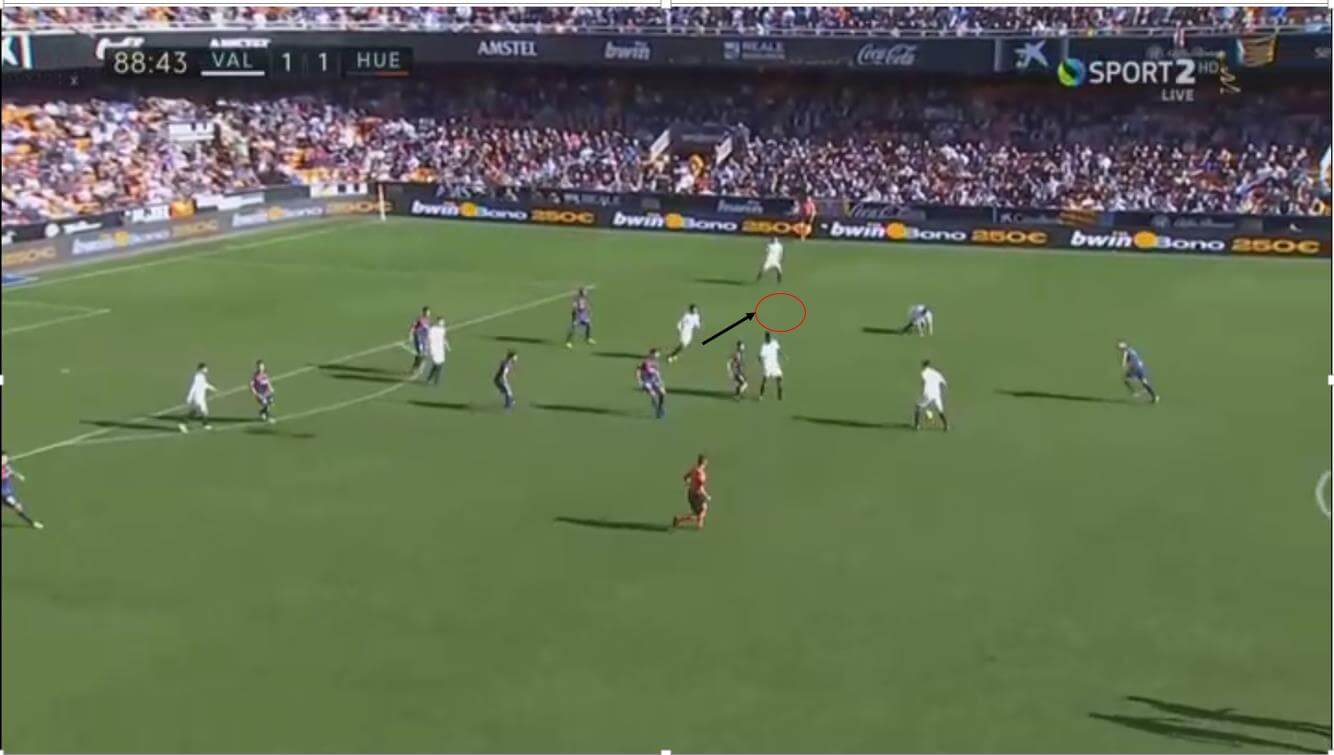
These movements and combinations can also give him great goalscoring chances. Here, his forward had just successfully controlled the ball. Parejo quickly moved close to provide a passing option. In this position, he could take a shot or combine with the attackers. In reality, he found Soler in space.
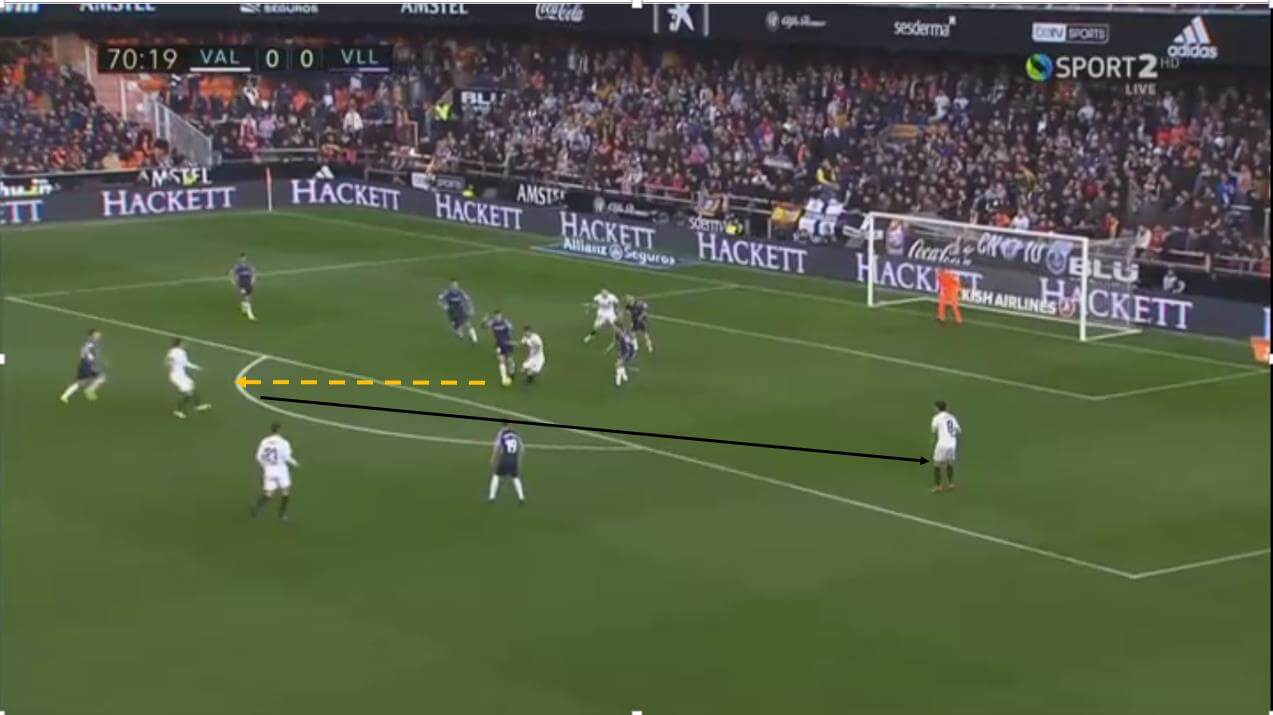
He then made a late run into the box unmarked and scored from Soler’s return pass.
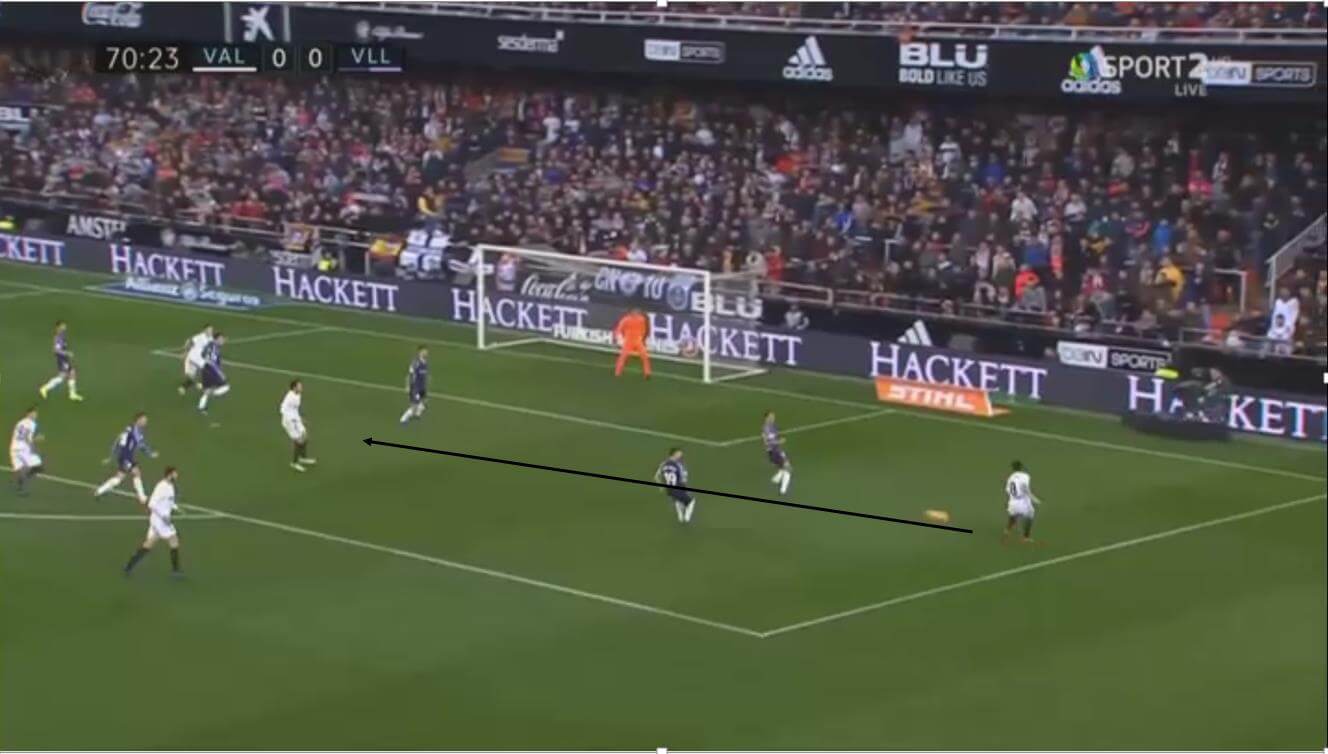
He is a highly press-resistant player due to his composure and vision. Valencia try to launch quick attacks whenever possible, and Parejo’s combinations in tight space can help them get out of aggressive high pressing from the opposition and leave many of their players behind the ball. Los Ches can then make use of their fast strikers to score.
In the example below, Parejo intercepted the ball and beat his nearby opponent. He was then pressed by the circled opponent.
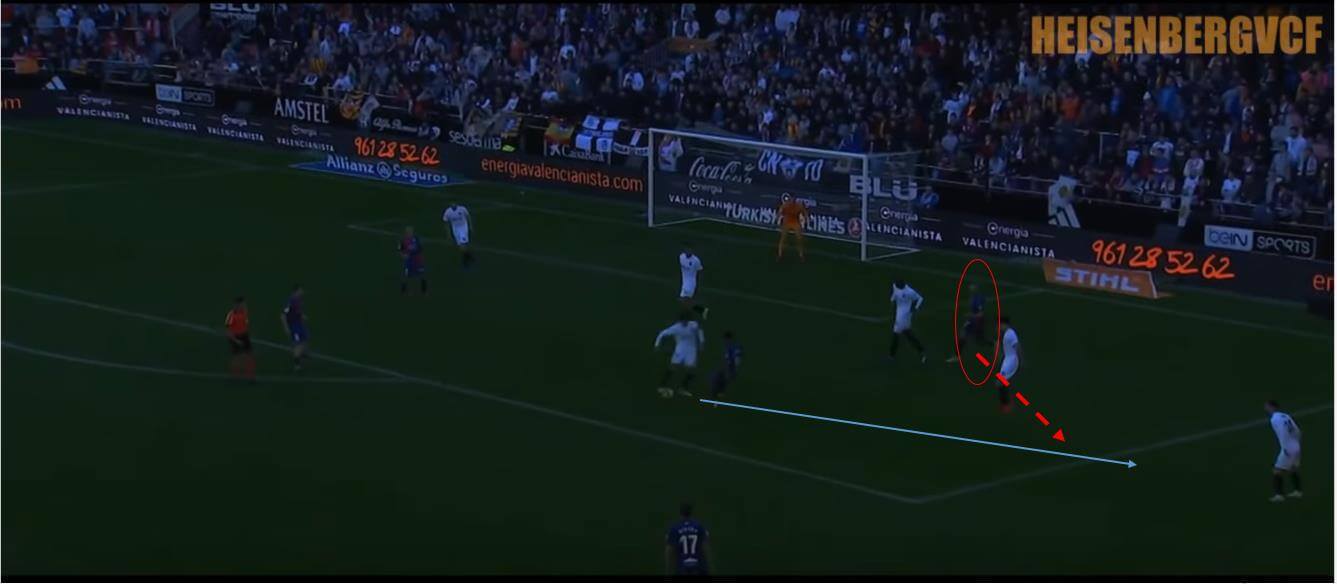
He shielded the ball well and get past the Eibar player with a quick one-two.
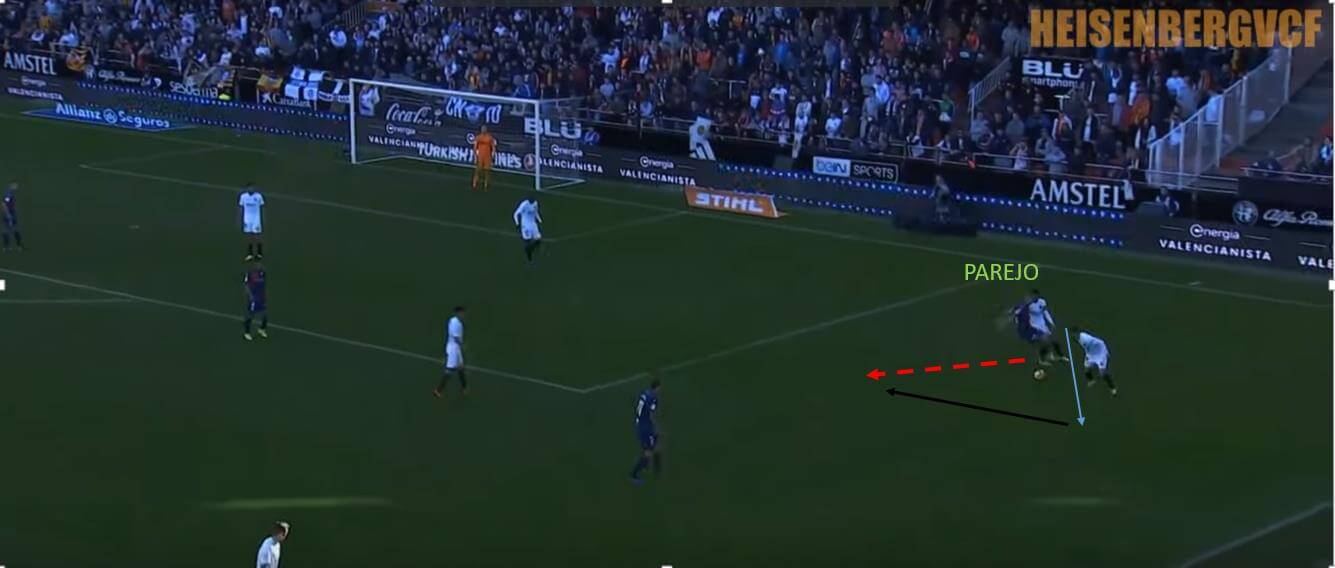
Parejo then took out two lines of pressing with his pass to the forward, who was going towards the circled point.
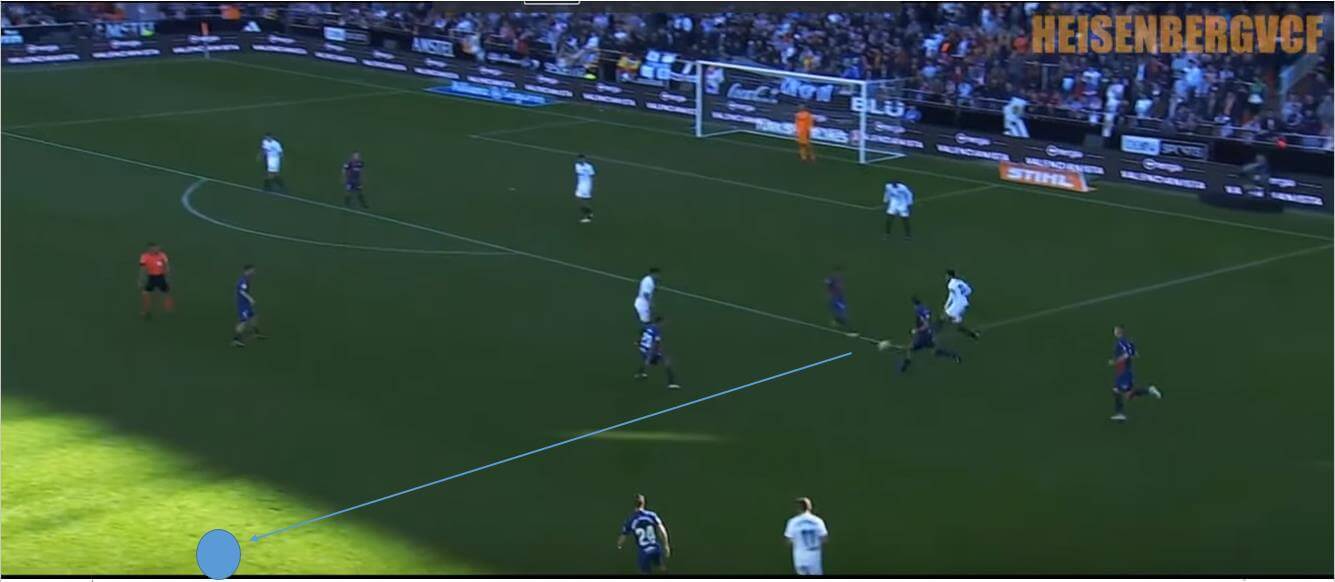
Conclusion
This analysis has shown Parejo’s main strengths, which the new coach will definitely look to utilise. His tactics will be an adaptation of the players at disposal, of which Parejo is arguably the most influential. If managed properly, “Dani” and co. will prove to be one of the best sides in Europe.

If you love tactical analysis, then you’ll love the digital magazines from totalfootballanalysis.com – a guaranteed 100+ pages of pure tactical analysis covering topics from the Premier League, Serie A, La Liga, Bundesliga and many, many more. Buy your copy of the August issue for just ₤4.99 here.

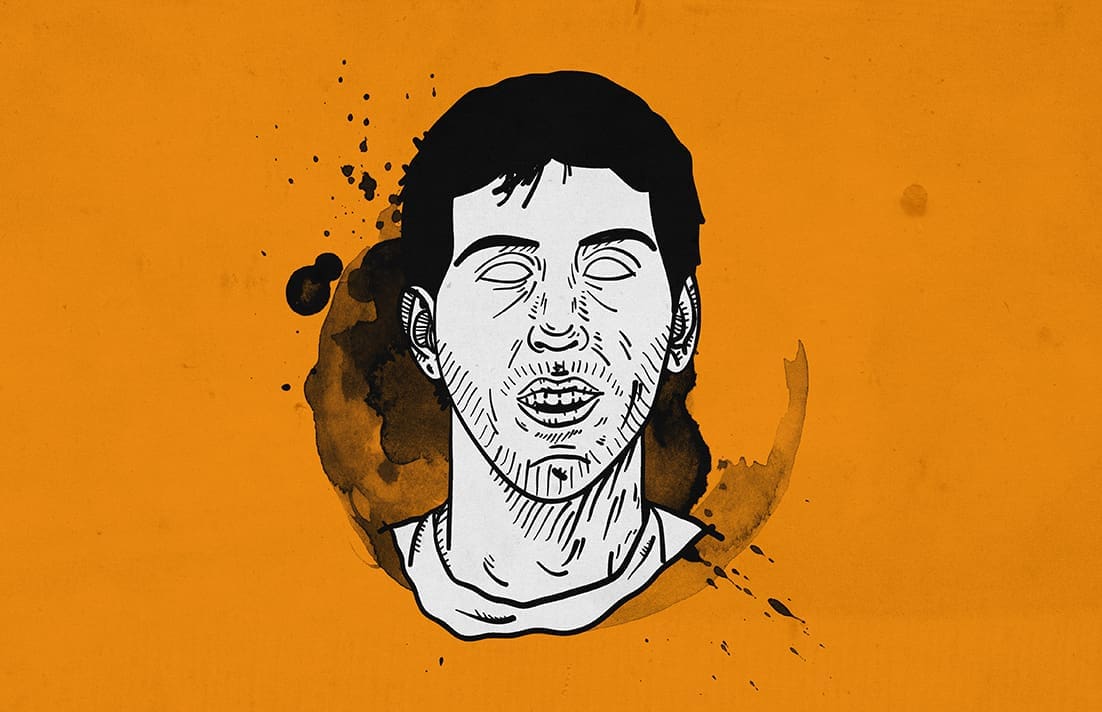



Comments